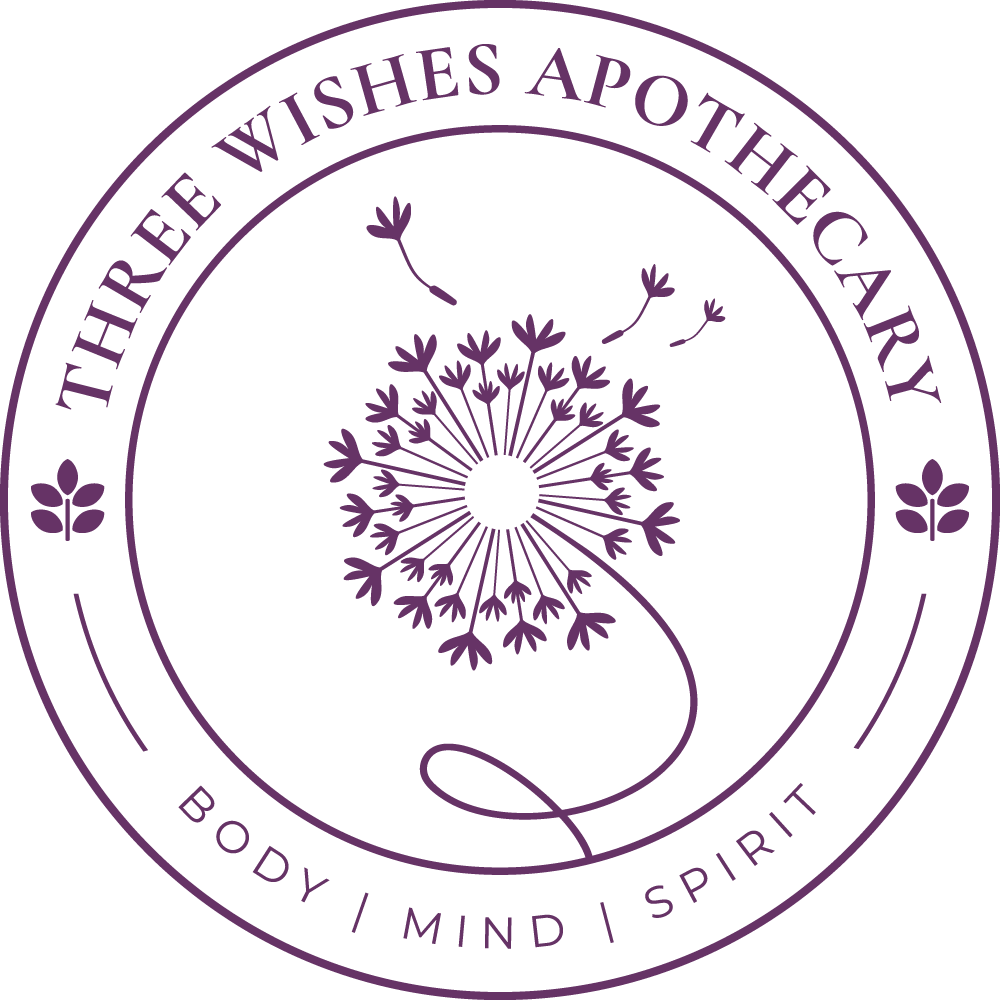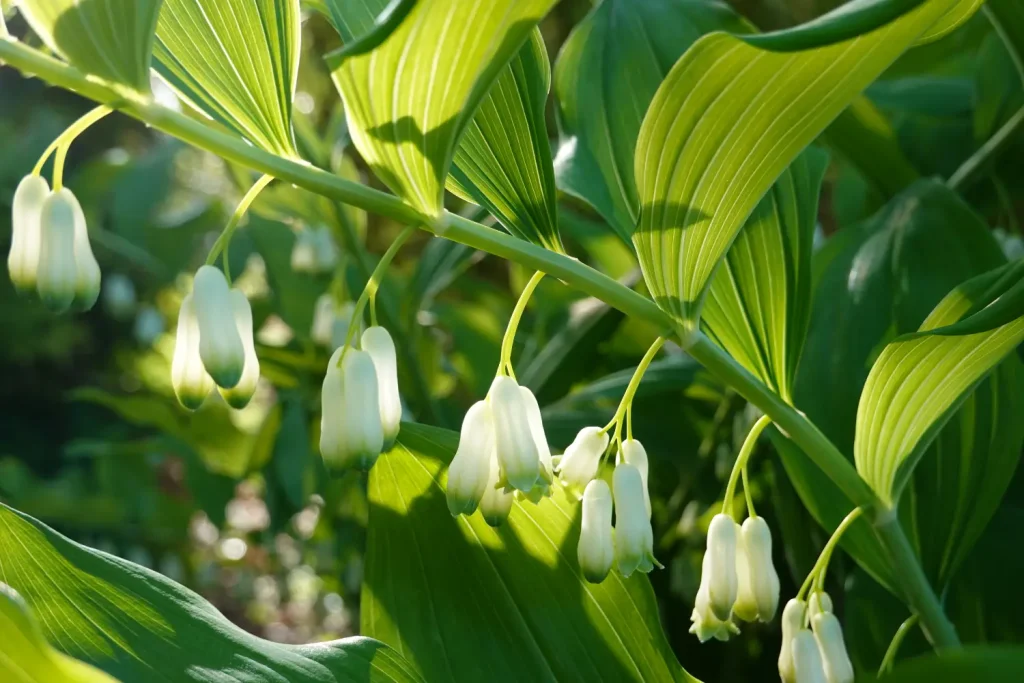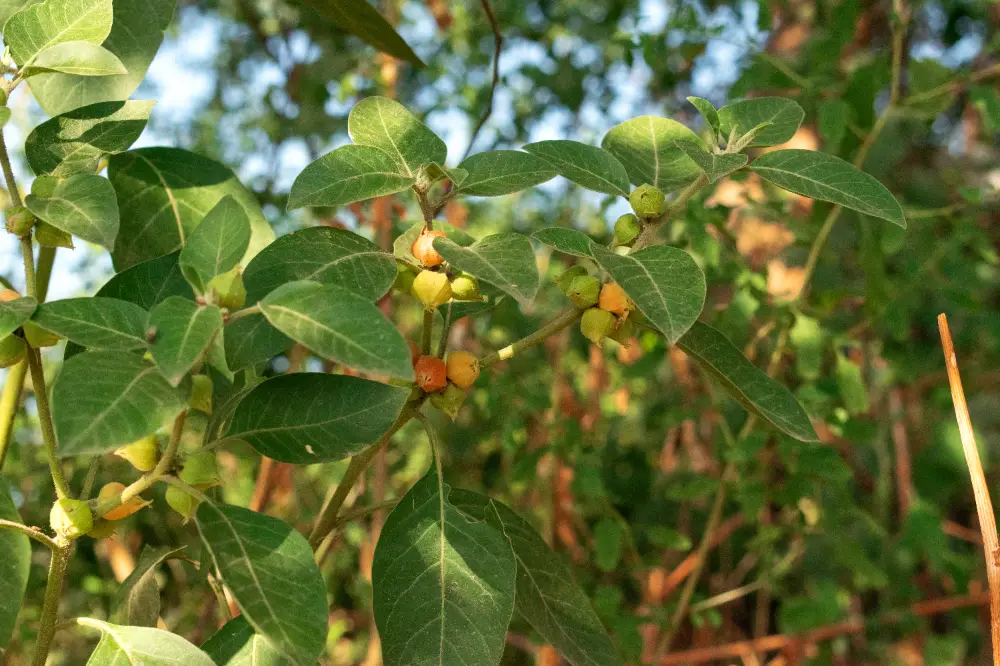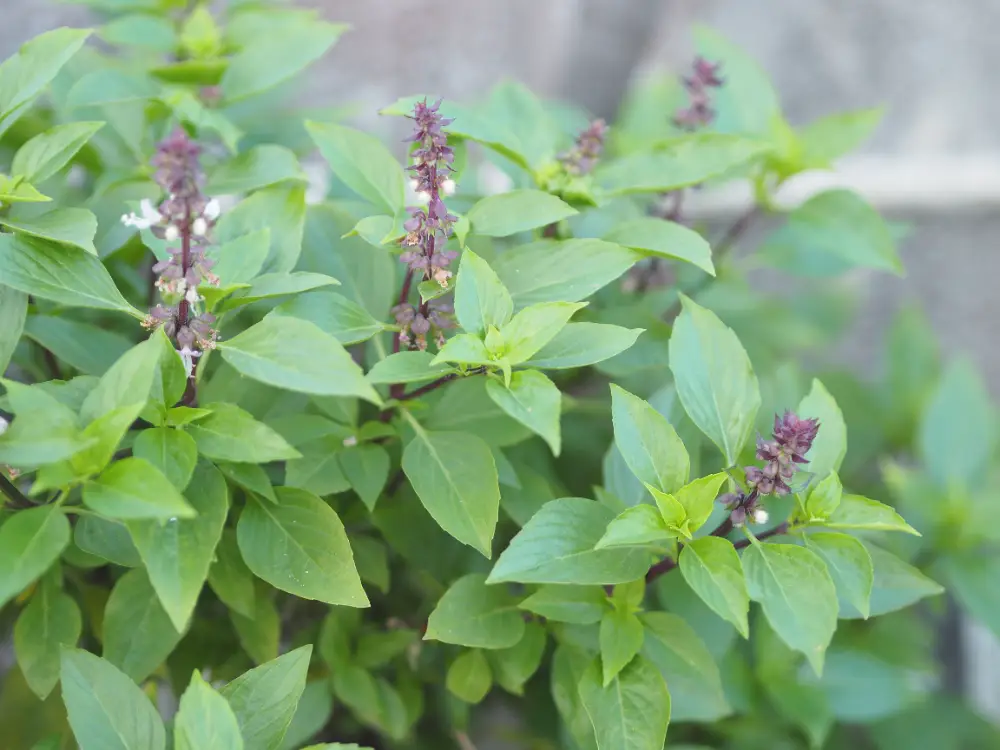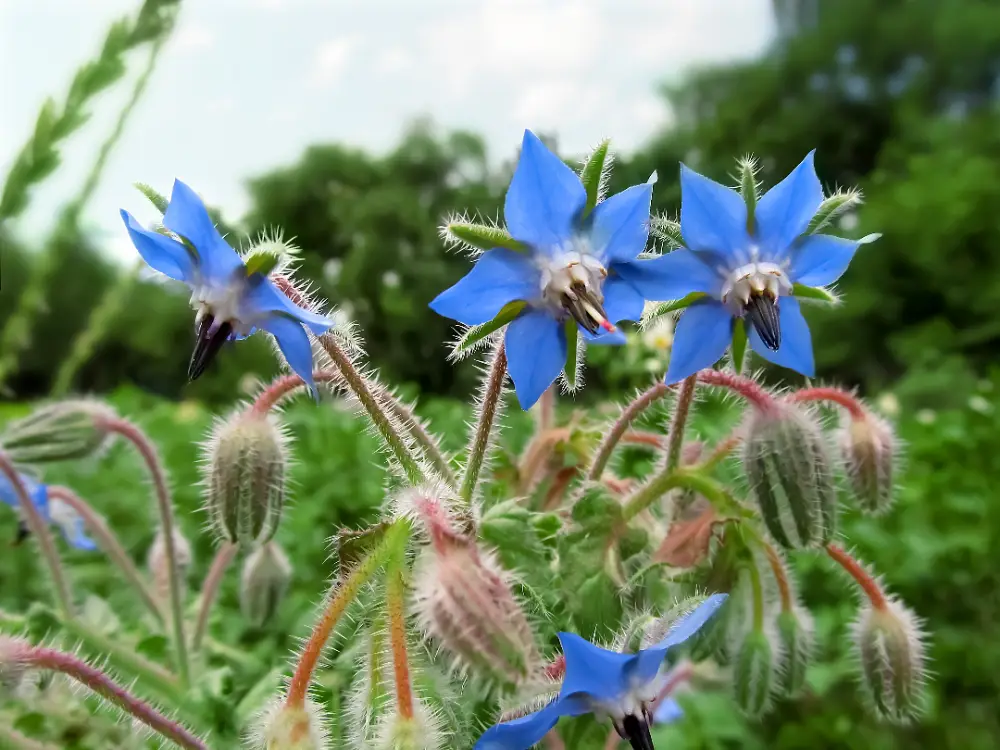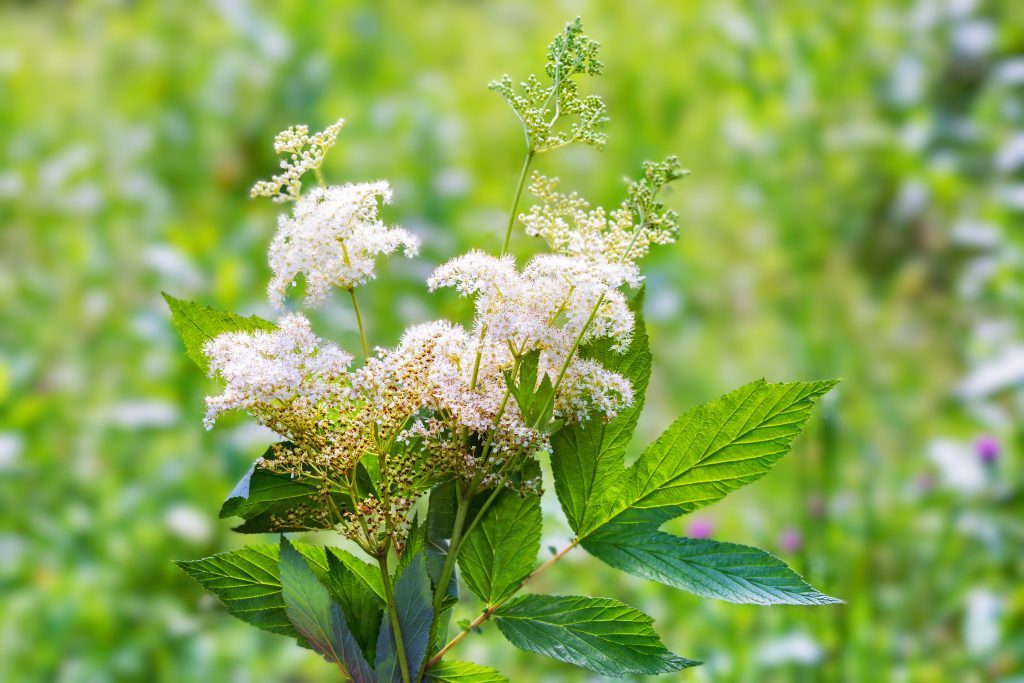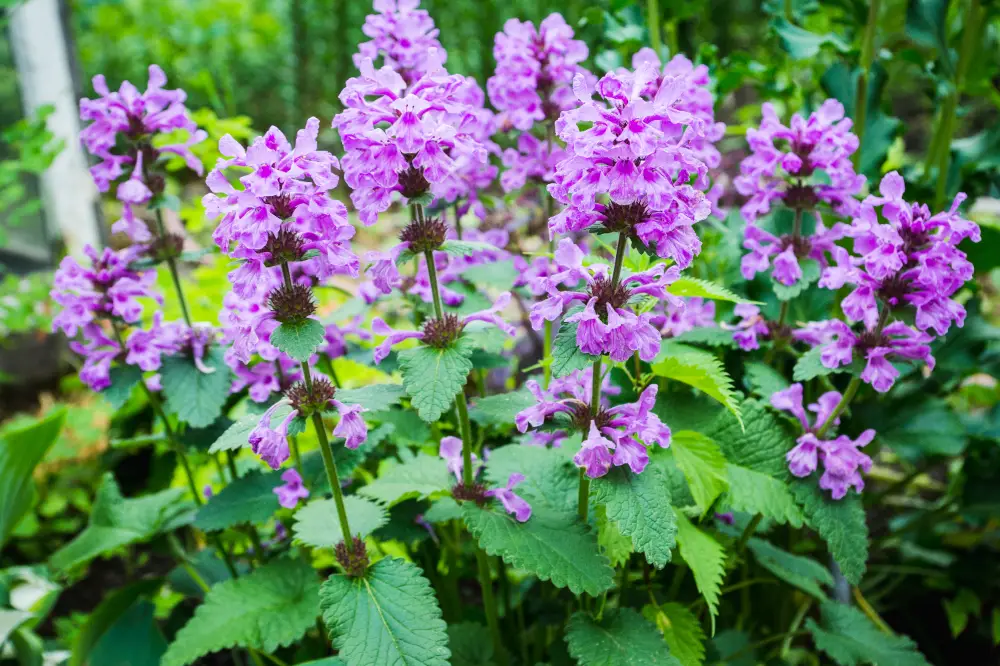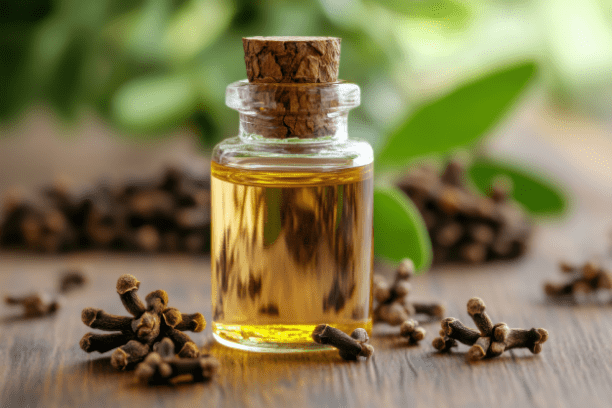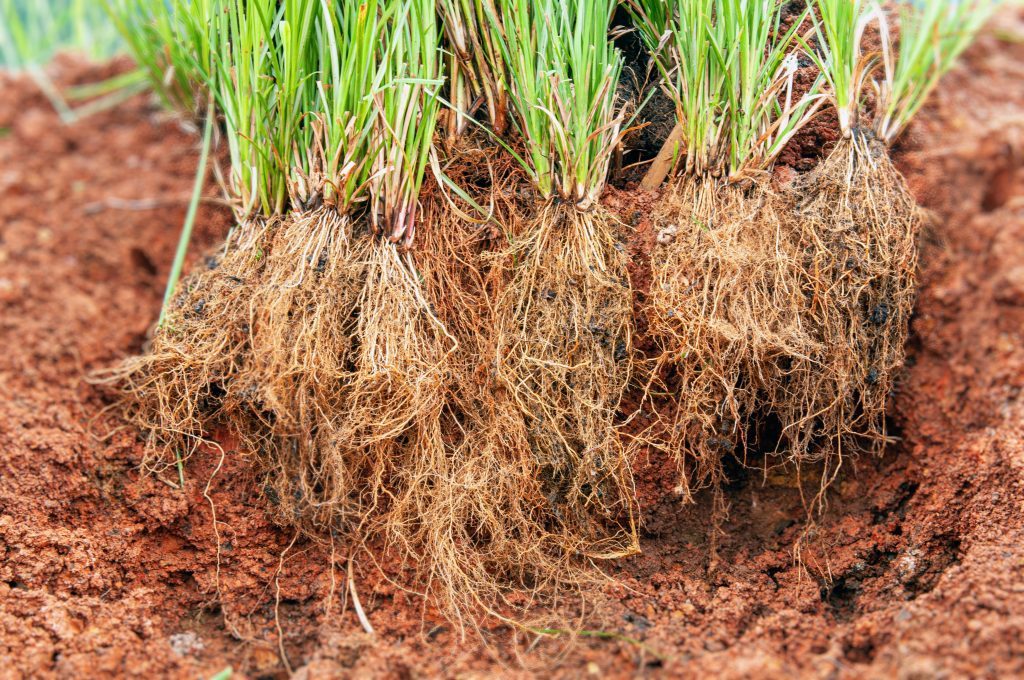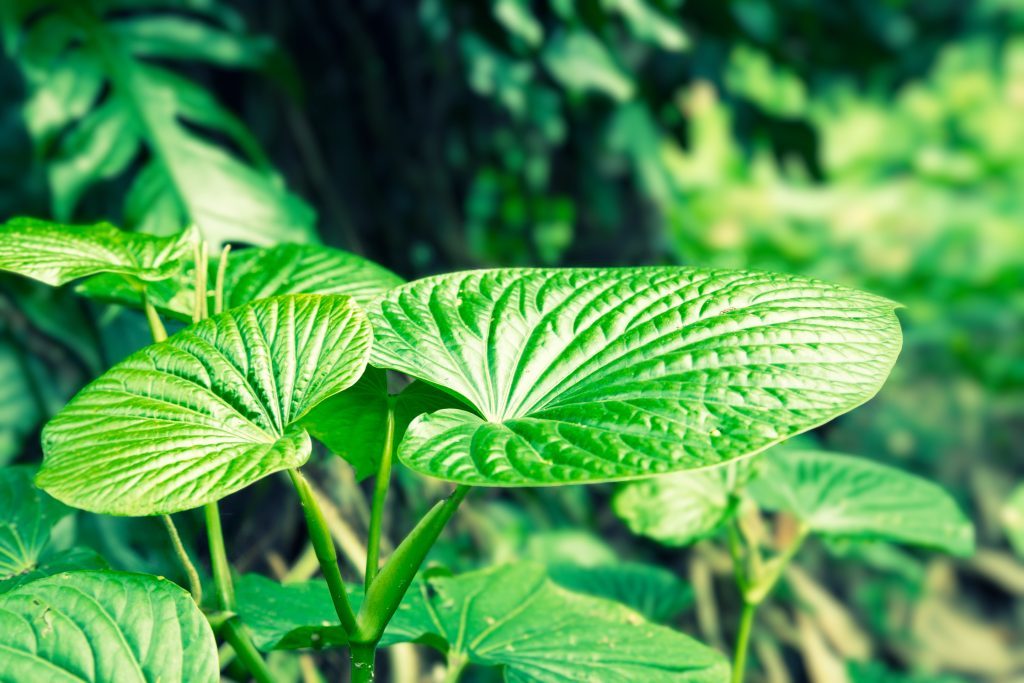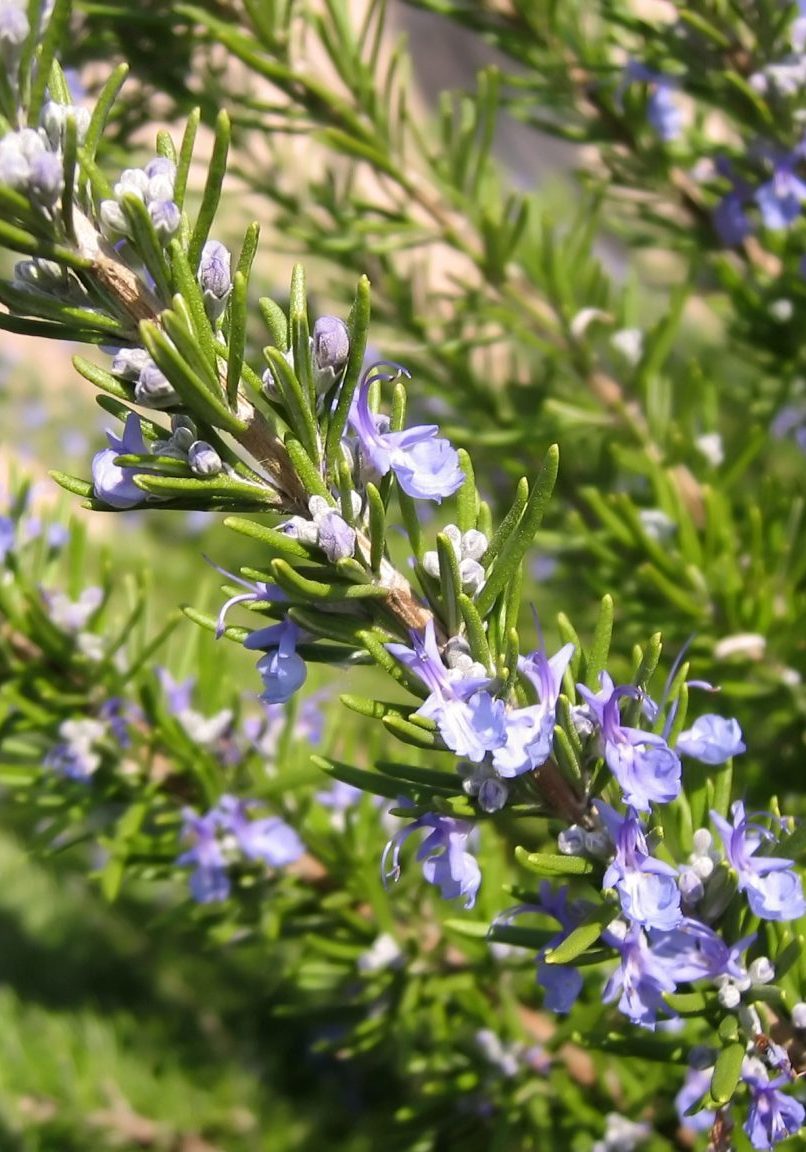
Rosemary
Rosmarinus officinalis
Lamiaceae (Mint family)
Memory’s Guardian – Awakening the Mind, Warming the Body, and Nourishing the Spirit
Other names:
Dew of the Sea, Compass Weed, Polar Plant, Elf Leaf, Herb of Crown, Old Man, Sea Dew, Incensier.
Superpower
The ability to sharpen the mind and invigorate the body while offering grounding energy to the spirit.
Uses
Historical Uses:
Rosmarinus officinalis has been revered for centuries as a memory enhancer and a symbol of remembrance. In ancient Greece and Rome, students would wear rosemary to improve focus during exams, and it was commonly used in funeral rites to honor the memory of the deceased. Its ability to stimulate circulation and alleviate cold conditions was well known, with rosemary baths or infusions used to invigorate the body. In medieval Europe, it was also burned as incense for purification and protection against illness, especially during the plague.
Current Uses:
- Cognitive support: Widely used for its memory-enhancing properties, rosemary supports cognitive function and is often used in aromatherapy to clear brain fog.
- Circulation booster: Rosemary’s warming and stimulating actions increase blood flow, particularly helpful for cold extremities or poor circulation.
- Respiratory relief: Effective in clearing the lungs and easing congestion, rosemary supports respiratory health, especially during colds, allergies, or asthma.
- Digestive aid: As a bitter tonic, rosemary promotes bile production, aiding digestion and relieving bloating, gas, and indigestion.
- Topical application: Rosemary’s anti-inflammatory and antimicrobial properties are beneficial for sore muscles, acne, and wound healing when used in poultices or infused oils.
- Emotional upliftment: Rosemary clears mental fatigue, uplifts the spirit, and offers emotional clarity. Its aromatic oils are also used to purify spaces and enhance emotional wellbeing.
Cautions
Toxicity: Topical use of essential oil may cause dermatitis and photosensitivity.
Contraindications: Avoid internal use of essential oil. Use caution in epilepsy, as high doses of camphor may cause convulsions.
Interactions: May inhibit iron absorption (avoid taking with meals and supplements).
Known Chemical Constituents
Volatile oil: Borneol, camphene, camphor, cineole, pinene, limonene, and linalool contribute to rosemary’s stimulating and aromatic properties.
Flavonoid: Apigenin and diosmin provide antioxidant and anti-inflammatory benefits.
Caffeic-acid derivatives: Rosmarinic acid, known for its strong antioxidant properties.
Tannins: Astringent compounds that contribute to its digestive and circulatory health benefits.
Resins: Sticky substances that give rosemary its aromatic and preservative qualities.
Bitters: Stimulate digestive function by increasing bile production.
Botanical Description
Habitat: Native to the Mediterranean region, Rosmarinus officinalis thrives in warm, sunny locations with well-drained soil. It is commonly found growing near coastal cliffs but has adapted to various climates worldwide.
Leaves: Evergreen and needle-like, the leaves are dark green on top and silvery-white underneath, covered in fine hairs that help conserve moisture. The leaves grow in opposite pairs along the square stem.
Stems: Woody at the base, with younger, greener stems at the tips. The square shape is characteristic of the mint family, and the plant forms a bushy, upright growth habit.
Flowers: Small, pale blue to lavender flowers bloom in clusters along the upper parts of the stems, attracting pollinators such as bees. The flowers are tubular, with two lips, typical of Lamiaceae plants.
Roots: Fibrous and spreading, allowing the plant to anchor itself in rocky or poor soils. Rosemary’s roots help it endure drought and resist soil erosion.
Fun Facts
Rosemary was believed to have been a favorite herb of the Greek goddess Aphrodite, who was said to have been draped in it when she rose from the sea. The herb has long been associated with love, protection, and memory, and in the Middle Ages, it was even placed under pillows to ward off nightmares and invite happy dreams.
Parts Used
Aerial
Harvest
Timing: For the highest potency of essential oils, it is best to harvest before the plant flowers. If you are seeking the leaves for medicinal or culinary use, cut the stems in late morning after the dew has dried but before the sun is at its peak. If you wish to use the flowers, wait until the plant is in full bloom and harvest the blooms when fresh.
Method: Use sharp scissors or pruning shears to cut the younger, tender stems. Avoid cutting too close to the woody base to encourage continued growth. Gather the leaves and flowers for drying or immediate use in preparations like teas and oils.
Storage: Dried rosemary can be stored in an airtight container in a cool, dark place for up to a year. Fresh sprigs can be stored in the refrigerator wrapped in a damp cloth or placed in water, but for longer storage, freezing or drying is best.
Preparations
Teas and Infusions: Rosemary can be brewed into teas or infusions to support digestion, stimulate the mind, and improve circulation. Its slightly bitter taste also makes it useful as a digestive tonic.
Tinctures: A tincture of rosemary can be taken for mental clarity, memory enhancement, and nervous system support.
Oils and Salves: Rosemary-infused oils are excellent for topical application to soothe sore muscles, improve circulation, and help with skin conditions. It’s often used in hair oils to promote scalp health and encourage hair growth.
Essential Oil: The essential oil of rosemary can be diffused or applied topically (diluted) for respiratory relief, mental clarity, and emotional upliftment.
Culinary Uses: Fresh or dried rosemary is used to season foods, particularly in Mediterranean cuisine, and can aid digestion when added to meals rich in fats or proteins.
Sacred Rituals
Rosemary-infused oil can be applied to the temples before meditation to enhance concentration and deepen the experience of inner wisdom. As you apply the oil, recite an affirmation to strengthen your connection to mental clarity and spiritual insight.
Affirmations
“I am clear, focused, and grounded in my intentions. My mind is sharp, my heart is open, and I embrace the wisdom that comes from within.”
Spiritual Associations
Moon Phase: Rosemary is best worked with during the New Moon for setting intentions of clarity, mental focus, and fresh beginnings. It is also a powerful ally during the Full Moon for cleansing and protection rituals, both for personal energy and physical space.
Functions
A substance or agent that reduces inflammation in the body, soothing irritation, swelling, or redness in tissues.
Antimicrobial
A substance or agent that inhibits the growth of or destroys microorganisms, including bacteria, viruses, fungi, and protozoa.
AntioxidantA substance or agent that neutralizes free radicals, preventing oxidative damage to cells and tissues.
AntispasmodicA substance or agent that helps relieve or prevent involuntary muscle spasms, cramps, or contractions in smooth or skeletal muscles.
AstringentA substance or agent that causes contraction or tightening of tissues, often reducing secretions or bleeding.
Carminative
A substance or agent that helps relieve gas, bloating, and discomfort in the digestive system by promoting the expulsion of gas and soothing the digestive tract.
Cerebral & Circulatory StimulantCerebral and circulatory stimulants refer to substances or agents that enhance blood flow to the brain and other parts of the body, promoting improved cognitive function, mental clarity, and overall circulation.
Dandruff ReductionRefers to interventions that minimize the presence of white flakes on the scalp, often caused by dryness, excess oil, or fungal growth, to restore scalp health.
Digestive & Elimination HealthThe overall well-being and optimal functioning of the digestive system, which includes the gastrointestinal tract, liver, pancreas, and other supporting organs. It encompasses the processes of breaking down food, absorbing nutrients, and eliminating waste, as well as maintaining a healthy balance of gut microbiota.
DiureticA diuretic is a substance that promotes the increased production and excretion of urine, helping the body eliminate excess fluids and salts through the kidneys.
Hair HealthThe condition, strength, and appearance of hair, influenced by factors such as nutrition, scalp health, and hormonal balance.
Hair TonicA substance or herbal preparation that nourishes the scalp, strengthens hair follicles, and promotes healthy, vibrant hair growth.
Memory ImprovementMemory improvement refers to measures or substances that enhance cognitive function, specifically focusing on the retention, recall, and processing of information.
Muscle RelaxationMuscle relaxation refers to the reduction of muscle tension or spasms, often achieved through substances or techniques that promote the calming and loosening of tight or overactive muscles.
Nervine TonicA nervine tonic is a substance that nourishes, restores, and strengthens the nervous system, promoting long-term resilience and balance.
NootropicA nootropic is a substance that enhances cognitive function, particularly in areas like memory, focus, creativity, and mental clarity, often by improving cerebral circulation and supporting neurotransmitter activity.
Spasm ReliefInterventions or substances that help relax muscles, reduce involuntary contractions, and alleviate pain or discomfort caused by muscle spasms.

